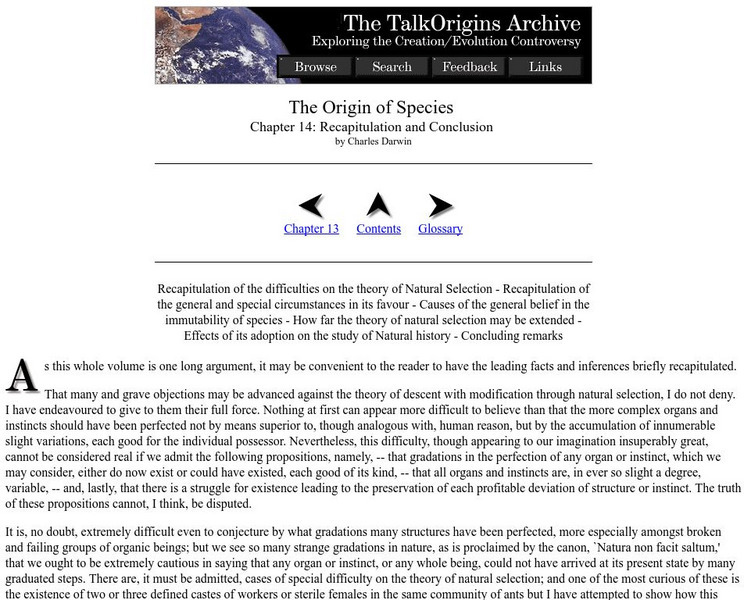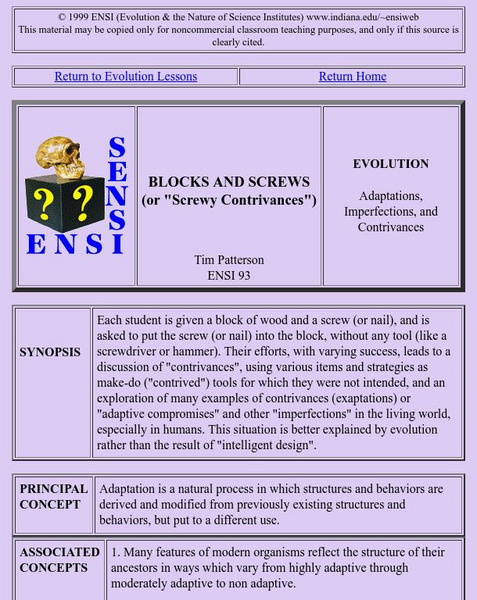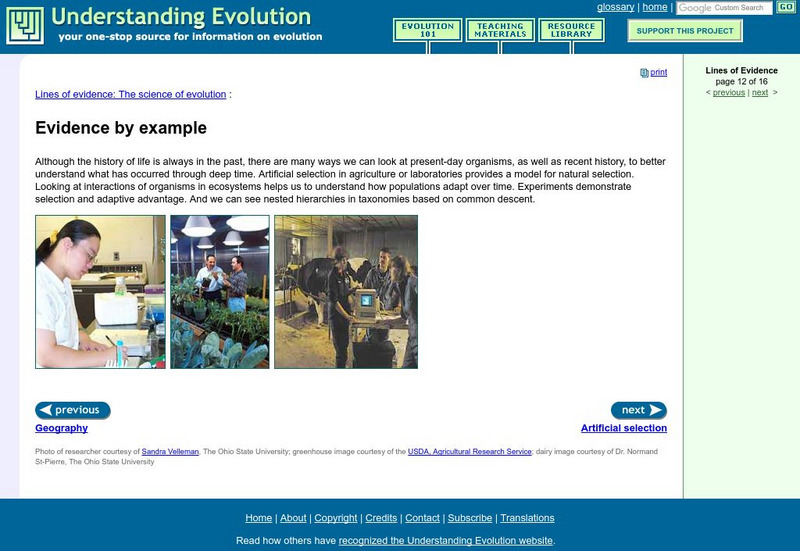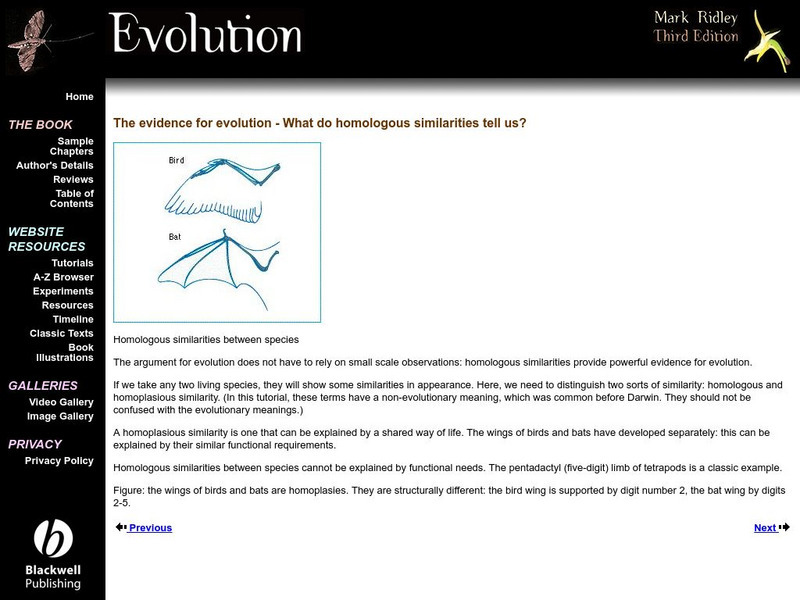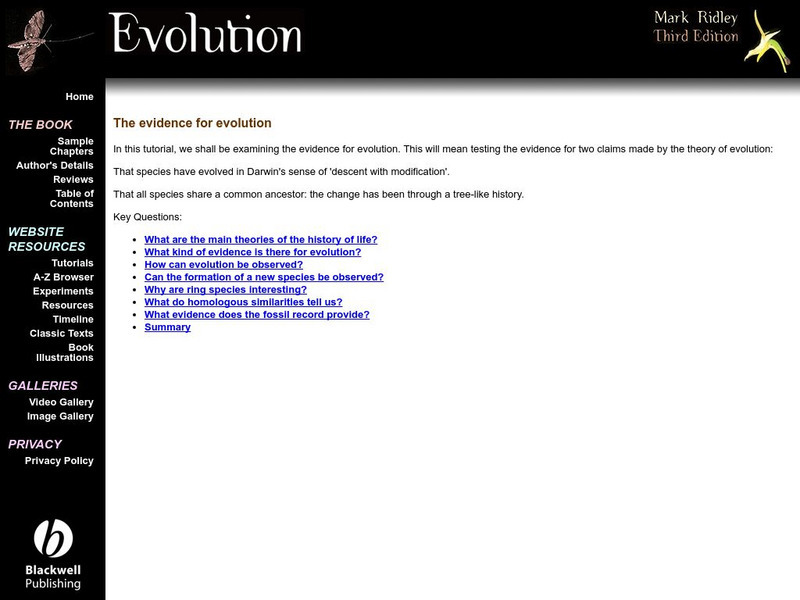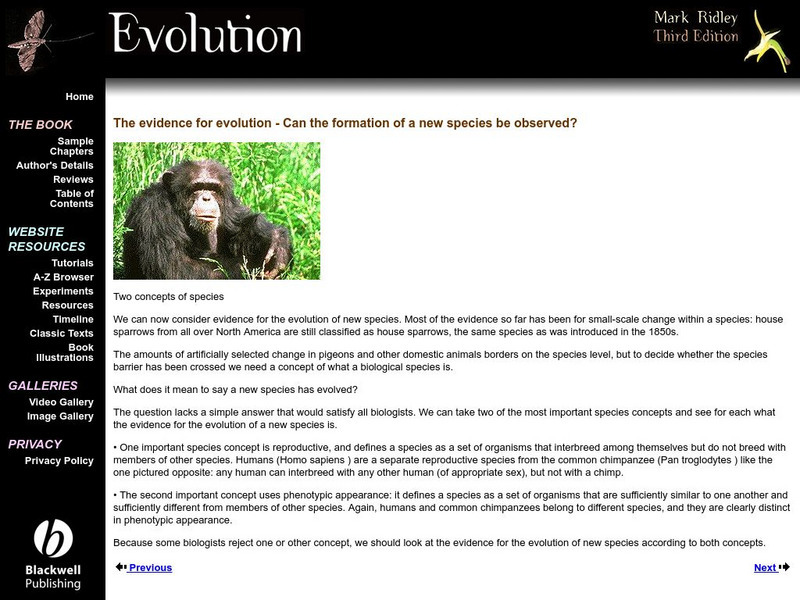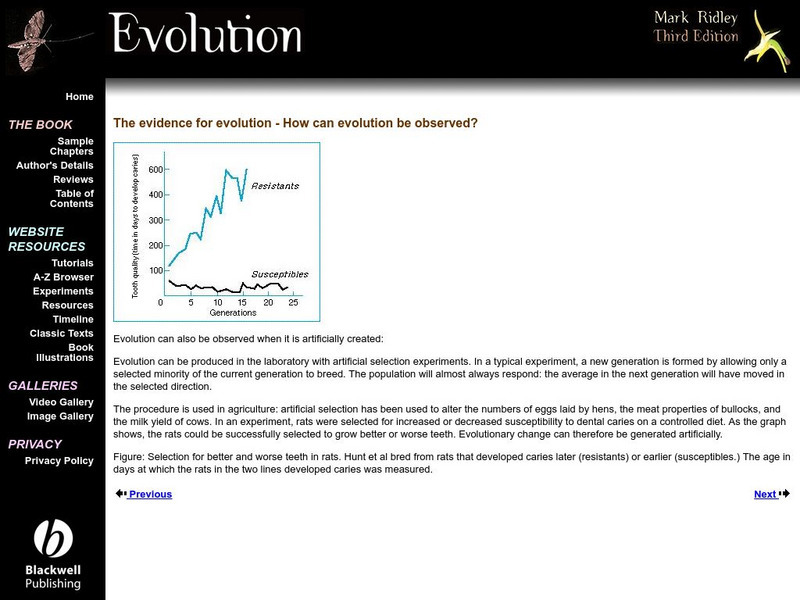Curated OER
AP: Chapter 26: Origin of Life
Five pages take biologists on a generalized survey of the origin of life. Queries are made regarding theories of how life developed, ancient Earth conditions, and the ever-changing field of taxonomy. The experiments of different...
Cold Spring Harbor Laboratory
Dna From the Beginning: Living Things Share Common Genes
This multimedia article includes animations, pictures, video, biographical information, and quiz questions that are accessed by clicking on buttons along the bottom of the page. Here you can see how common genes are evidence for common...
PBS
Pbs Learning Media: Darwin's Diary
At the online companion Web site of "Evolution," the seven-episode series on PBS, delve into the private thoughts of a reluctant revolutionary--Charles Darwin.
PBS
Pbs Learning Media: Darwin's Letters to Lyell
In this letter written to his friend and mentor Charles Lyell less than three weeks after the publication of "On the Origin of Species", Darwin describes the reaction of the great anatomist Richard Owen to his theory. From Charles...
PBS
Pbs Learning Media: Evidence for Evolution Web Quest
This Web quest from the PBS series "Evolution" will help you investigate a variety of types of evidence for evolution.
Talk Origins Archive
The Origin of Species, Chapter 14
The entire text of Charles Darwin's book, The Origin of Species is available on this site. This link is specifically for the chapter that discusses embryology as evidence for evolution.
American Geosciences Institute
American Geological Institute: Evolution and the Fossil Record
The American Geological Institute has done an excellent job of defining and explaining evolution in this online booklet. Darwin, fossils, natural selection, and change over time are some of the concepts that are covered. Make sure to see...
Indiana University
Ensi: The Great Fossil Find Lesson Plan
Students hear a story as they "find" bones that you have put in an envelope for them. Their job is to begin assembling the bones as best they can. The students will invariably come up with different configurations--just like scientists...
Indiana University
Ensi: Blocks and Screws Lesson Plan
The Evolution and the Nature of Science Institute offers lesson plans that investigate the vestigial organs in such a way as to better explain their imperfections as proof of evolution rather than the result of "intelligent design."
Open Curriculum
Open Curriculum: Evidence for Evolution
With this article, students will be able to clarify the significance of a scientific theory and recognize that Darwin supported his theory with a great deal of evidence, and that many kinds of evidence since his time have further...
Open Curriculum
Open Curriculum: Evolution Continues Today Can We Control It?
This article allows students to recognize that the process of evolution by natural selection continues to change our world and ourselves, both despite and because of our best efforts to control it.
Other
Evidence for Evolution: Fossil Record
These pages are part of a site called "Evolution," that accompanies a textbook by the same name. Mark Ridley is the author. In this section he discusses how fossil records provide undeniable examples of evolutionary change.
University of California
University of California Museum of Paleontology: Fossil Evidence
Understanding Evolution provides evidence for evolution using fossils. There are also links to lesson plans.
University of California
University of California Museum of Paleontology: Evidence by Example
The Understanding Evolution website for teachers provides common examples of evolution, especially by artificial selection.
PBS
Pbs: Intimate Strangers: Tree of Life
Find out how Dr. Carl Woese used RNA to develop the tree of life.
University of California
University of California Museum of Paleontology: Homologies
These pages are from the Understanding Evolution website for teachers. They focus on homologous structures that organisms with common ancestors share.
New York University
Nyu: Darwin's Evidence for Evolution: Embryology
Concise description of embryology as evidence for evolution, as used by Darwin.
Other
The Evidence for Evolution: Homologous Similarities
This site is a section part of a website that accompanies "Evolution," a textbook by Mark Ridley. Here he covers homologous structures, using them as evidence for evolution.
Other
The Evidence for Evolution
These pages are part of a site called "Evolution," that accompanies a textbook by the same name. Mark Ridley is the author, and in this section he discusses the evidence for evolution.
Other
Evidence for Evolution: Formation of New Species
These pages are part of a site called Evolution that accompanies a textbook by the same name. Mark Ridley is the author. These pages offer an explanation of speciation using reproductive isolation and differences in phenotype.
CK-12 Foundation
Ck 12: Biology: Living Species
[Free Registration/Login may be required to access all resource tools.] Discusses how evidence from living species provides clues about evolution.
PBS
Pbs Learning Media: Early Tetrapod Fossils
In this transcript of an interview filmed for the PBS series "Evolution," scientists Ted Daeschler and Neil Shubin describe the discovery and significance of some of their key fossil finds.
PBS
Pbs Learning Media: Fossils in the Gobi
Biologist Mike Novacek discusses his discovery of mammal fossils in the Gobi Desert and tells us what we can learn from them. From an episode about extinction broadcast on the PBS series "Evolution."
Other
Evidence for Evolution: How Can Evolution Be Observed?
These pages are part of a site called Evolution that accompanies a textbook by the same name. Mark Ridley is the author. In this section, he describes how artificial selection has provided many examples of evolutionary change. Examples...



